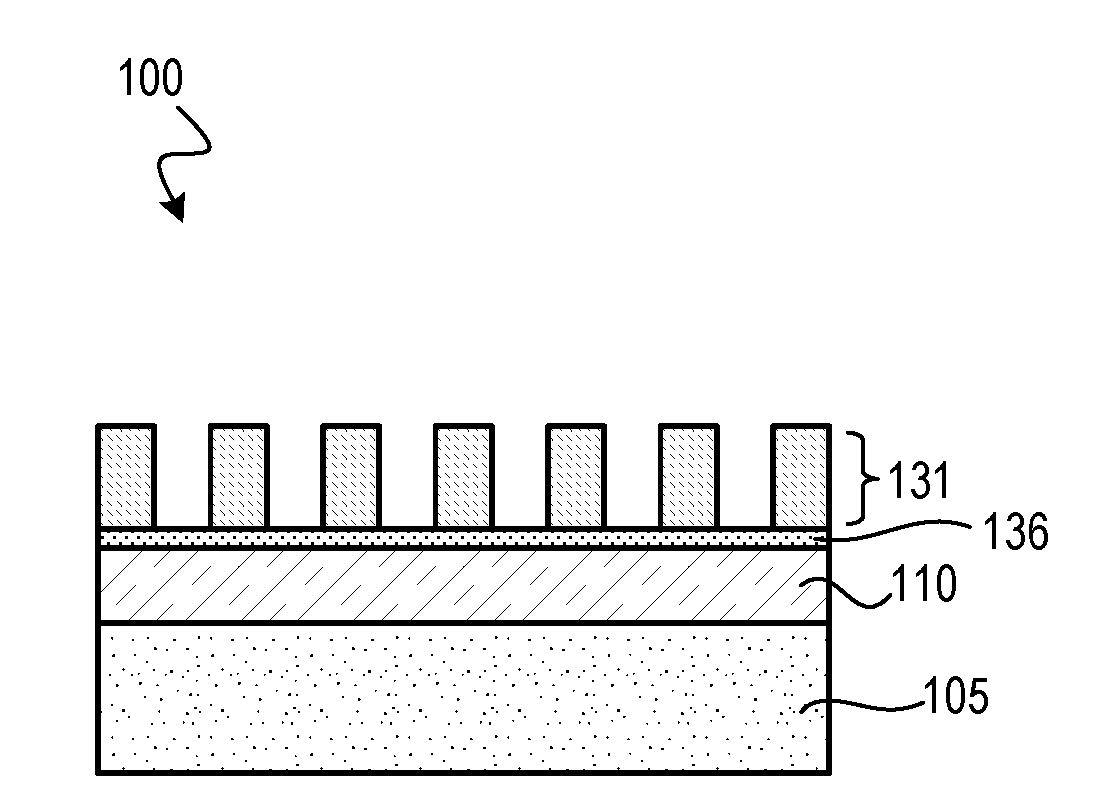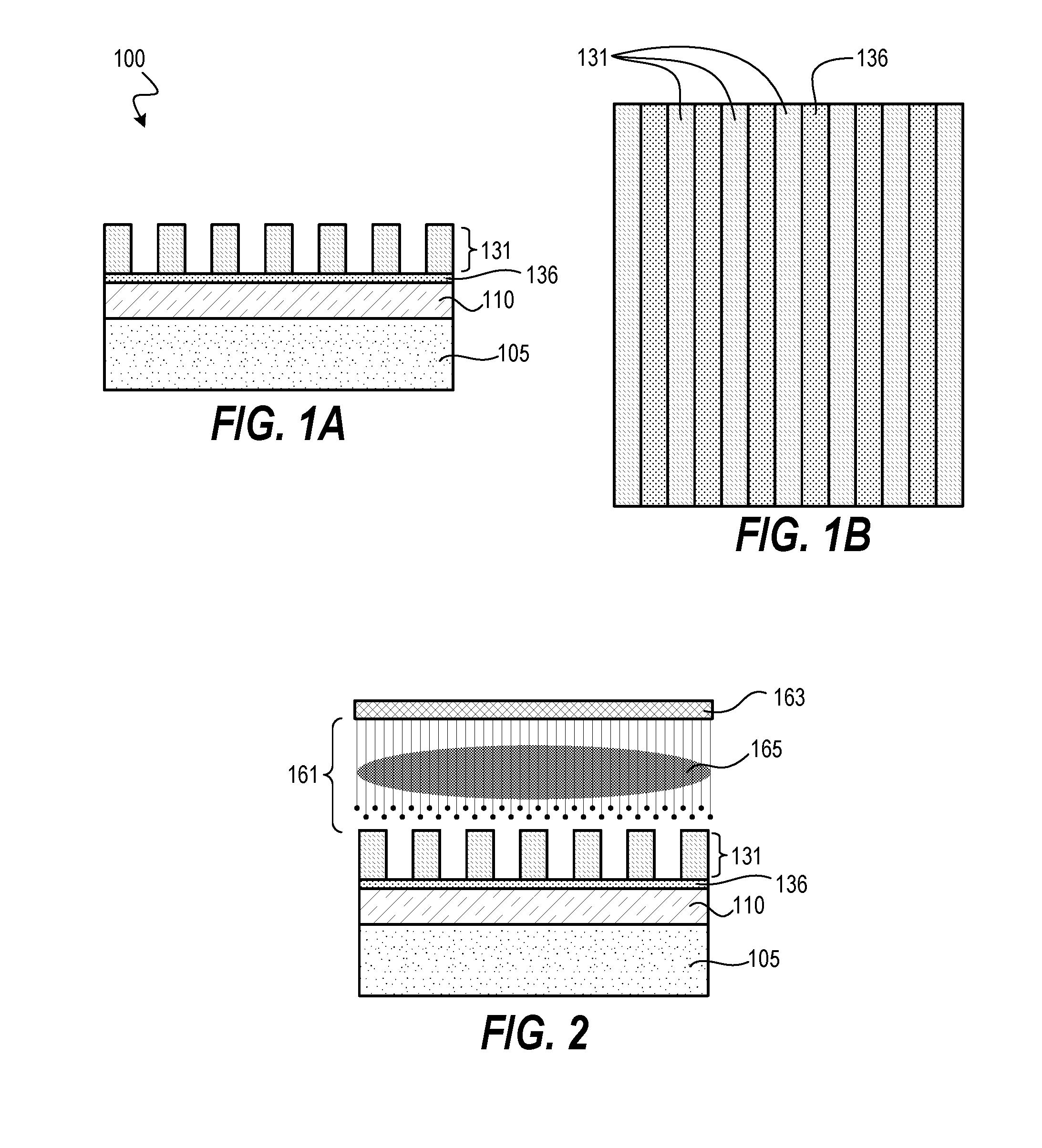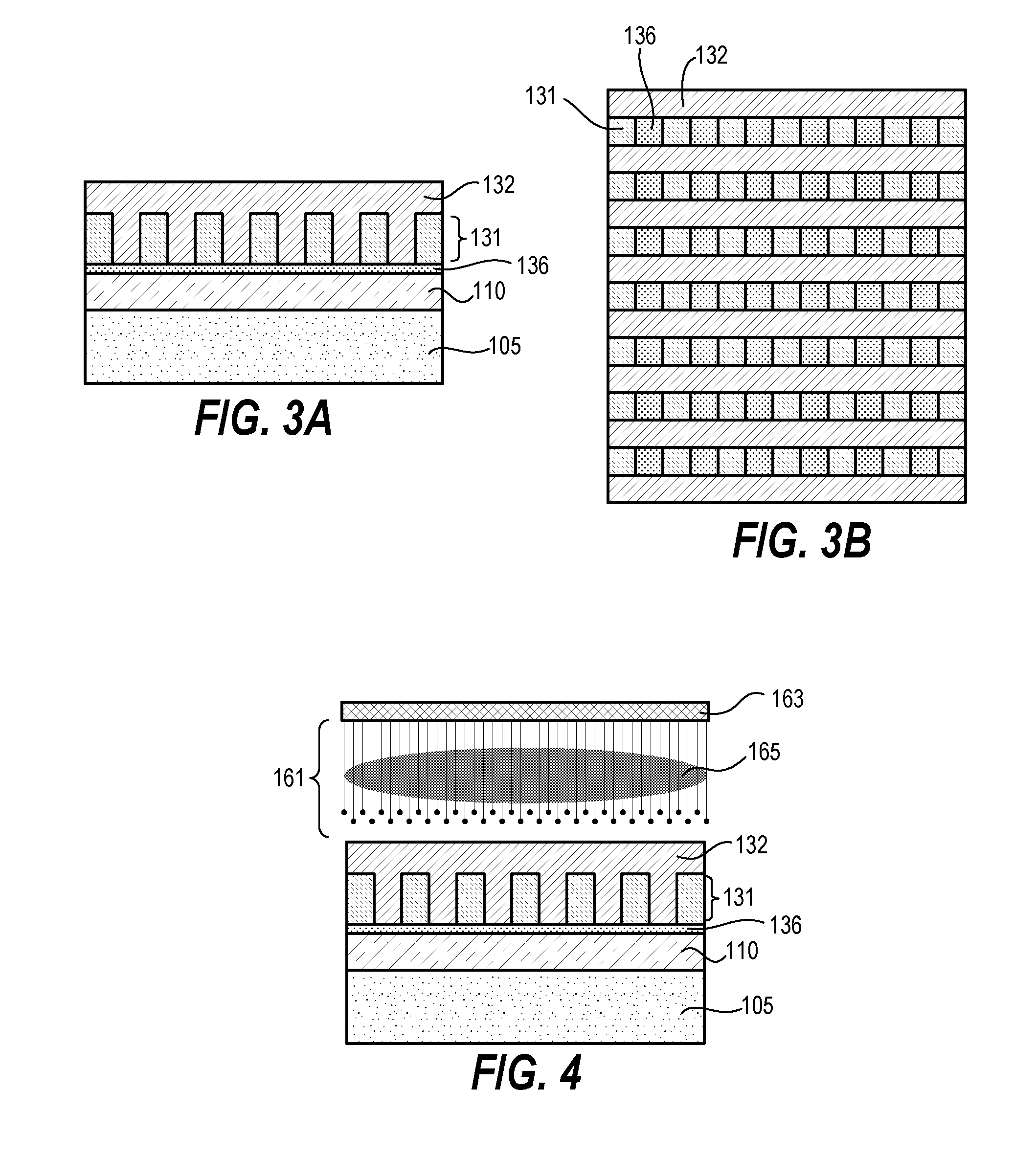Method for Patterning Using a Composite Pattern
- Summary
- Abstract
- Description
- Claims
- Application Information
AI Technical Summary
Benefits of technology
Problems solved by technology
Method used
Image
Examples
Embodiment Construction
[0026]Systems and methods disclosed herein include improved techniques for patterning substrates, including improvements to double patterning techniques. Techniques herein combine direct current superposition plasma processing with photolithographic patterning techniques. An electron flux or ballistic electron beam herein from plasma processing can induce cross linking in a given photoresist, which alters the photoresist to be resistant to subsequent light exposure and / or developer treatments. Plasma processing can also be used to add a protective layer of oxide on exposed surfaces of a first relief pattern, thereby further protecting the photoresist from a developing acid. By protecting an initial photoresist relief pattern from developing acid, a second relief pattern can be formed on and / or within (between structures of) the first photoresist relief pattern thereby doubling an initial pattern or otherwise increasing pattern density. This second relief pattern can then be treated ...
PUM
 Login to View More
Login to View More Abstract
Description
Claims
Application Information
 Login to View More
Login to View More - R&D
- Intellectual Property
- Life Sciences
- Materials
- Tech Scout
- Unparalleled Data Quality
- Higher Quality Content
- 60% Fewer Hallucinations
Browse by: Latest US Patents, China's latest patents, Technical Efficacy Thesaurus, Application Domain, Technology Topic, Popular Technical Reports.
© 2025 PatSnap. All rights reserved.Legal|Privacy policy|Modern Slavery Act Transparency Statement|Sitemap|About US| Contact US: help@patsnap.com



